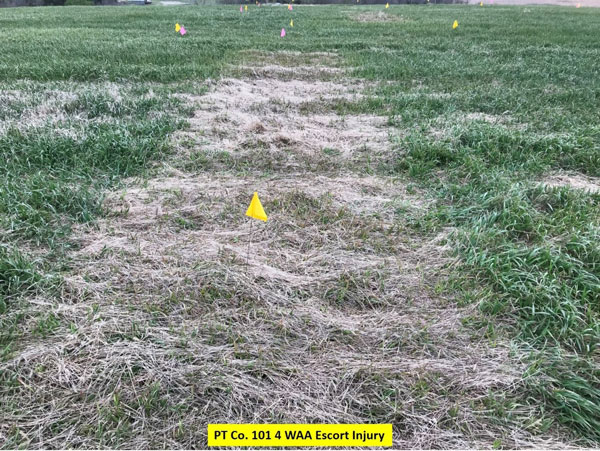By Stu Duncan, Southeast Area Agronomist, and Sarah Lancaster, Extension Weed Science Specialist
Managing foxtail infestations in smooth bromegrass, especially in old or thin stands, is a frequent question from farmers and extension agents.
Experiments were conducted in 2020 to evaluate some options for pre-emergence control of foxtail species in smooth bromegrass hay meadows in Dickinson (DK) and Pottawatomie (PT) counties.
Applications of pendimethalin (Prowl H2O), S-metolachlor (Dual II Magnum) and metsulfuron (Escort XP) occurred at two times: late March and after hay harvest (mid-June) in smooth bromegrass hay meadows (Table 1). Foxtail control and brome injury measurements were recorded bi-weekly and brome dry matter yields were measured in early June.
|
Herbicide |
Product |
Rate (product/a) |
|
Metsulfuron† |
Escort XP |
1 oz/a |
|
Pendimethalin |
Prowl H2O |
4 pt/a |
|
S-metolachlor |
Dual II Magnum |
1 pt/a |
† Metsulfuron was applied with 0.25% v/v crop oil concentrate.
Table 1. Herbicides and application rates applied in early spring and after brome hay harvest in Pottawatomie and Dickinson Counties in Kansas.
Averaged over both sites, Prowl H2O, applied early, controlled 97% of emerging foxtail compared to only 47% and 34% control provided by Dual II Magnum and Escort XP, respectively (Figure 1).
Escort XP applied in early spring resulted in 28% visual injury to the brome (Figure 2) and 62% less dry matter production compared to the untreated check (Figure 3).

Figure 1. Brome injury 4 weeds after herbicide application. Plot at top just right of center is same treatment.
Post-harvest herbicide applications provided minimal, non-significantly different levels of foxtail control (Figure 1). When data collection stopped in early September, foxtail suppression was unacceptable in all plots.
With the exception of early spring applied pendimethalin, herbicides did not adequately control foxtail in the short term and caused visible, but not always statistically significant, smooth brome injury.
Smooth brome injury was likely worsened by below-average temperatures, including six hard freeze events that occurred the week after spring application.
Herbicides did not reduce the late-summer foxtail infestation, despite apparent suppression eight weeks after the early spring application.
This work will be repeated in 2021 with refinement of treatments. Split applications of Prowl H2O may hold some promise and will be added.
Because of the unacceptable brome injury from Escort XP, and the lack of significant foxtail control by either Escort XP or Dual II Magnum treatments, these two treatments will be dropped from this study.






Post a comment
Report Abusive Comment